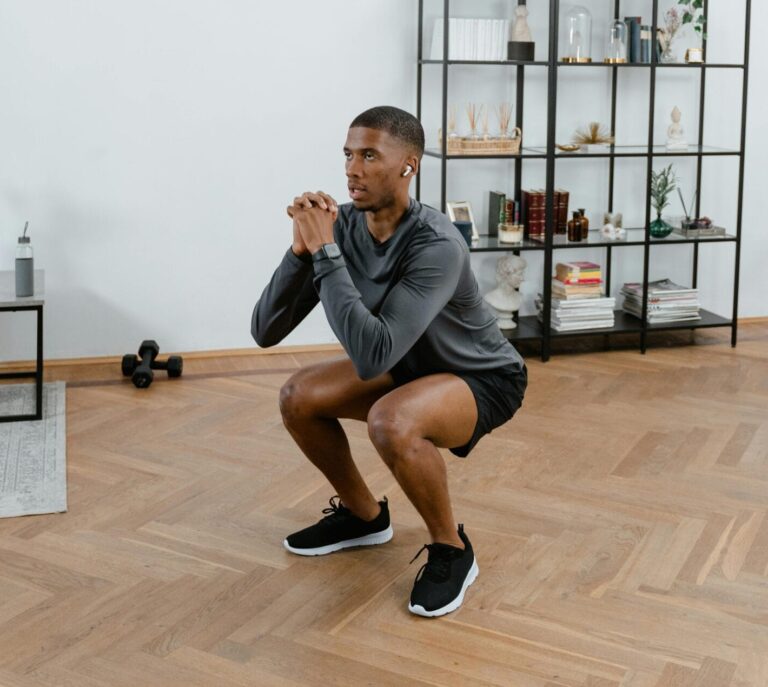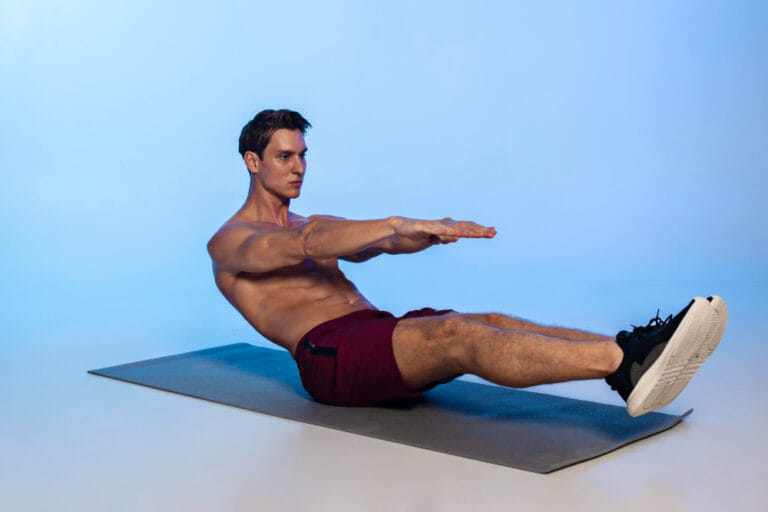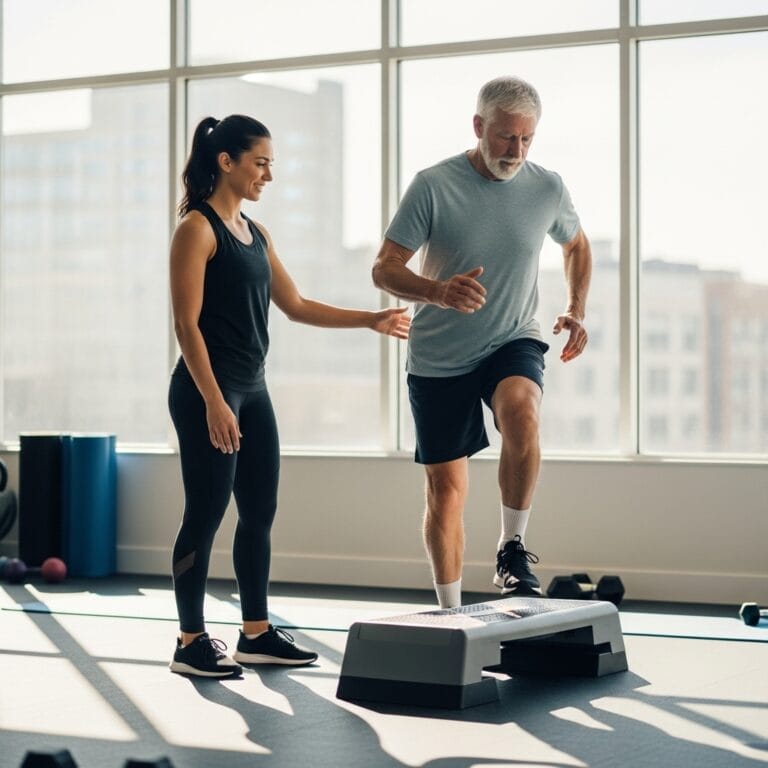FREE SHIPPING OVER $50
Strengthen Every Muscle In Your Body with This 5-Move Resistance Band Workout
Let’s face it: gyms are crowded, weights are expensive, and sometimes you just want to work out in your pajamas. Enter the resistance band—your new best friend for building strength, mobility, and muscle tone anywhere, anytime.
I’ve trained hundreds of clients (from busy parents to pro athletes) using bands, and I’m sharing the 5-move workout that delivers full-body results. No fancy equipment, no excuses—just science-backed exercises that fire up every muscle from your calves to your shoulders.
Ready to transform your living room into a powerhouse? Let’s roll.
Why Resistance Bands Beat Dumbbells for Total-Body Fitness

Before we dive into the moves, here’s why bands deserve a permanent spot in your fitness arsenal:
- Adaptive Resistance: Bands create tension throughout the entire movement, maximizing muscle activation.
- Joint-Friendly: Unlike heavy weights, bands reduce stress on joints while improving mobility.
- Portable & Affordable: A single band costs less than a gym membership and fits in your suitcase.
- Versatility: Adjust intensity by shortening the band or upgrading to heavier resistance.
The 5-Move Resistance Band Routine
This routine hits all major muscle groups: legs, glutes, core, back, chest, and arms. Do it 3–4x/week, resting 60 seconds between sets.
1. Banded Squat to Overhead Press (Legs, Shoulders, Core)
How to do it:
- Stand on the band, feet hip-width apart. Hold handles at shoulders.
- Lower into a squat, keeping chest up.
- As you stand, press the band overhead.
Pro tip: Keep core tight to avoid arching your back.
Muscles worked: Quads, glutes, deltoids, core.
Science says: Overhead pressing with bands increases shoulder stability by 30% compared to dumbbells.
2. Bent-Over Row (Back, Biceps)
How to do it:
- Step on the band, hinge at hips, and hold handles with palms facing in.
- Pull elbows back, squeezing shoulder blades.
- Slowly release.
Muscles worked: Lats, rhomboids, biceps.
Why it works: Rows counteract slouching from desk jobs and build posture-defining muscle.
3. Resistance Band Deadlift (Glutes, Hamstrings, Lower Back)
How to do it:
- Stand on the band, feet hip-width. Hold handles in front of thighs.
- Hinge at hips, lowering torso while keeping band taut.
- Squeeze glutes to return to standing.
Muscles worked: Glutes, hamstrings, erector spinae.
Pro tip: Push heels into the floor to maximize glute activation.
4. Standing Chest Press (Chest, Triceps)
How to do it:
- Anchor the band behind you at chest height.
- Hold handles, step forward to create tension, and press forward.
- Control the return.
Muscles worked: Pectorals, triceps, anterior deltoids.
Science says: Banded presses improve pressing strength by 12% in 8 weeks.
5. Pallof Press (Core, Obliques)
How to do it:
- Anchor the band to a sturdy object at chest height.
- Stand sideways, hold handle with both hands, and press straight out.
- Resist band’s pull for 10 seconds.
Muscles worked: Transverse abdominis, obliques.
Why it works: This anti-rotation move builds a bulletproof core for better posture and injury prevention.
Sample Full-Body Workout Plan
Warm-Up (5 mins): Banded arm circles, bodyweight squats, and cat-cow stretches.
Circuit (3 rounds):
- Banded Squat to Overhead Press: 12 reps
- Bent-Over Row: 10 reps
- Resistance Band Deadlift: 12 reps
- Standing Chest Press: 10 reps
- Pallof Press: 10 seconds/side
Cool-Down (5 mins): Child’s pose and hamstring stretches.
Too Easy? Use a thicker band or add a pause at the peak of each rep.
How to Choose the Right Resistance Band
- Loop Bands: Ideal for lower-body exercises (squats, deadlifts). Start with medium resistance.
- Tube Bands with Handles: Best for upper-body moves (rows, presses).
- Flat Bands: Great for mobility work and stretching.
Progression: Buy a set with light, medium, and heavy resistance.
3 Mistakes That Sabotage Band Workouts
- Using Momentum: Swinging reduces muscle tension. Move slowly and control each rep.
- Ignoring Full Range of Motion: Stretch the band fully for maximum muscle fiber recruitment.
- Wrong Anchor Point: Secure bands to a sturdy door, pole, or squat rack to prevent snapback.
Why Bands Build Functional Strength Faster
- Constant Tension: Muscles work harder through the entire movement vs. gravity-dependent weights.
- Multi-Planar Training: Bands allow diagonal and rotational moves that mimic real-life motions.
- Scalable: Perfect for rehab, beginners, or advanced lifters needing a burnout finisher.
Conclusion
Resistance bands aren’t just a backup plan—they’re a secret weapon for building balanced strength, improving mobility, and staying injury-free. This 5-move routine takes 30 minutes, requires zero machines, and delivers results you can see (and feel) in 4–6 weeks.
Your turn: Grab a band, crush this workout, and tag me with your progress. Let’s make every day leg day (and arm day, and core day…).
Related Articles
- Want Strong, Toned Arms? Try This Trainer’s 8-Exercise Routine Today
- 5 Low-Impact Exercises to Strengthen Your Whole Body—No Jumping Needed
- Abs Are Made in the Kitchen: 10 Superfoods for a Chiseled Six-Pack
- 15 Minutes, One Set of Dumbbells: Your Ultimate Full-Body Workout Solution
- Skip the Gym: 4 Kettlebell Exercises That Build Serious Strength at Home



